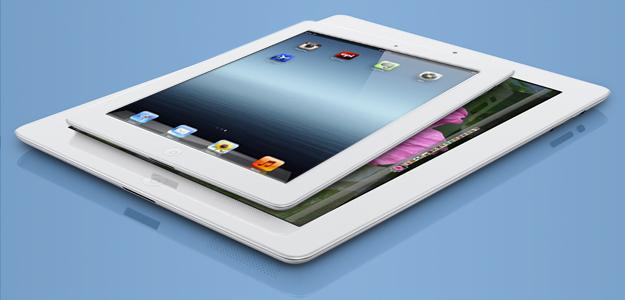 About this time last year, if you had tried to convince a major company to produce a 7-inch tablet, they would have laughed in your face. At the time, these tablets were seen as “tweener” products that wouldn’t and couldn’t sell. Only idiots would bring them to market. You’d probably lose your shirt.
About this time last year, if you had tried to convince a major company to produce a 7-inch tablet, they would have laughed in your face. At the time, these tablets were seen as “tweener” products that wouldn’t and couldn’t sell. Only idiots would bring them to market. You’d probably lose your shirt.
Then the Kindle Fire shipped and spiked hard in the holiday season. Earlier this year, Google announced the Nexus 7, and proceeded to sell buckets of them. Just weeks ago, Amazon followed up its original hit with the Kindle Fire HD 7, which is even more advanced, better priced, and reportedly selling at even a more aggressive pace. Around a month from now, the iPad mini will ship in the same size, and suddenly we’ll be up to our armpits with products that are successfully selling, in a segment that many thought was stupid just a year ago.
We also thought big screen phones were stupid before the iPhone shipped successfully. And even Steve Jobs said tablets were stupid before Apple shipped the iPad. So how does an idea go from idiotic to brilliant? And how come Apple didn’t lead the way on this one?
We don’t like “different”
It often takes us a while to get comfortable with a new idea. For instance, one of the most unsuccessful cars in history was the Ford Edsel, which was based on massive market research, but bombed. Yet compared to cars that came out a few years later, the Edsel just appears ahead of its time.
Microsoft had tablets long before Apple did, Philips was showcasing smartphones like Apple’s in the 1990s but couldn’t get support to bring them to market, and LG had the Prada in 2007, which Apple basically ripped off.
But once we see something, we slowly get comfortable with the idea. Eventually, it isn’t so different, and we have a new market. Apple isn’t the first to see an opportunity; it’s often just the first sense when the market is ready for it, and willing to spend the time and money to ride the resulting wave.
Apple seemed to time the iPhone and iPad perfectly in that regard, but with the 7-inch tablets, both Google and Amazon beat it to the punch.
Kindle blazed the trail
The process of making consumers comfortable with 7-inch devices started with e-readers, and Amazon lead that trend. In fact, Steve Jobs thought e-readers were stupid at the time, because he believed no one read anymore. While he was right in that e-readers never became the success that smartphones or the iPad, they sold enough to familiarize people with this smaller size. When the Kindle Fire showed up on an e-reader vector, it sold. When the Nexus 7 showed up, it expanded the vision for this form factor to a full tablet, and the market suddenly woke up to the advantages of 7-inch tablets, which are actually in many ways better than their 10-inch siblings. We should have seen this coming, because when 7-inch and 10-inch e-readers hit market, buyers gravitated toward the smaller product the same way.
What makes the 7-inch product better
There are a number of advantages to 7-inch tablets. They cost about half as much as 10-inch tablets. They’re vastly more portable and actually fit in jacket pockets and purses. They’re far lighter, which makes them much more comfortable for personal entertainment. Mostly, they don’t try to be laptop computers, which is the curse of their larger cousins.
To me, the 10-inch iPad is now the real “tweener” product: too small to be a laptop, too big to be truly portable.
Nexus 7 vs. Kindle Fire HD
Following that logic, while both the Nexus 7 and Kindle Fire HD are good products, the Kindle Fire is more Apple-like in its focus on the user experience. That makes it, in my opinion, the better product. It may not have all of the sensors that the Nexus does, but chances are you won’t use them anyway if you already own a smartphone. Amazon focused on things like a more expensive case and better screen instead. As a result, the Kindle Fire HD diverges sharply from the Nexus 7, is easier to use, and does core things better. But it doesn’t do as many things, so the two products likely appeal to different audiences.

Missing the boat
I think 7-inch tablets will be the big thing in the fourth quarter, which leaves Apple uncharacteristically behind. Not only did Apple miss the chance to set the bar here, it will be third to market with a very similar product, which doesn’t bode well for its ability to seize market leadership in this segment. Apple no longer leads with the iPhone either: Where vendors used to follow and copy the iPhone, now they are leading it with larger screens, better antennas, and faster radios. The iPod, meanwhile, is last decade’s news. That “Apple TV” thing better be a hit, or Apple could be screwed.
Guest contributor Rob Enderle is the founder and principal analyst for the Enderle Group, and one of the most frequently quoted tech pundits in the world. Opinion pieces denote the opinions of the author, and do not necessarily represent the views of Digital Trends.


